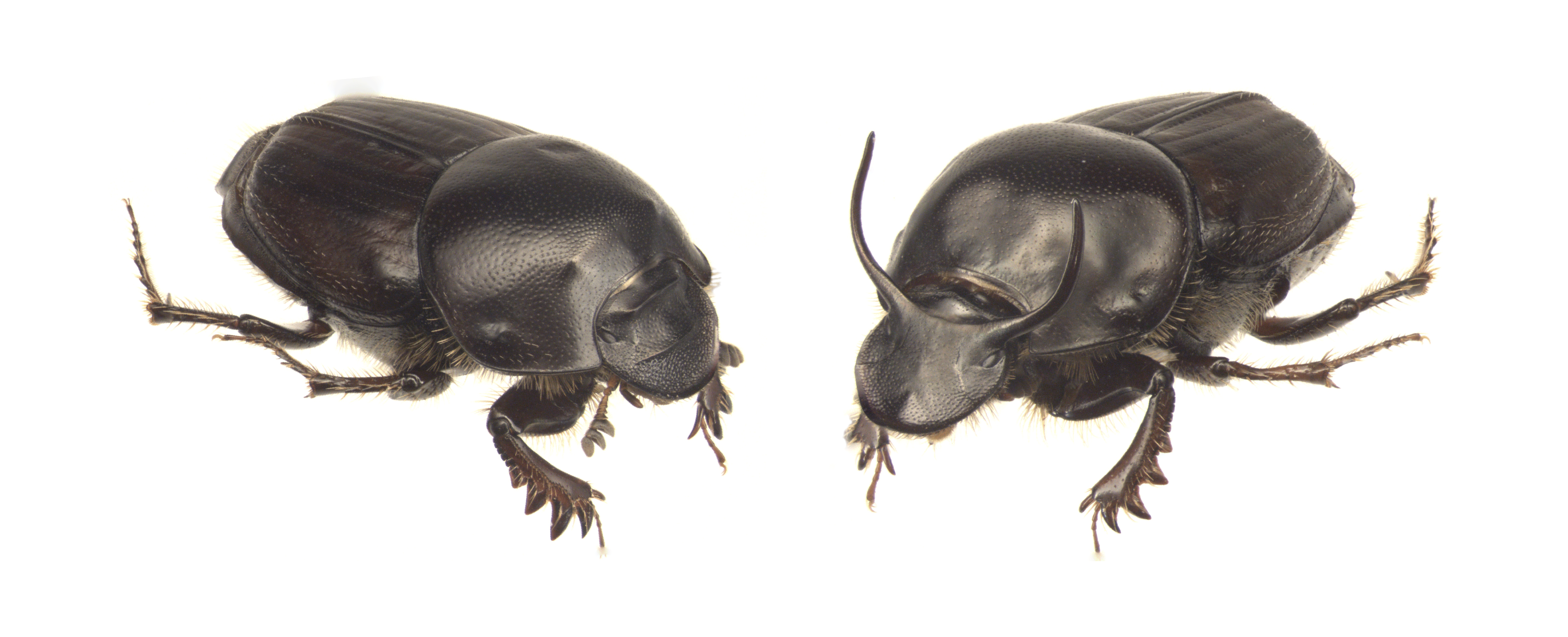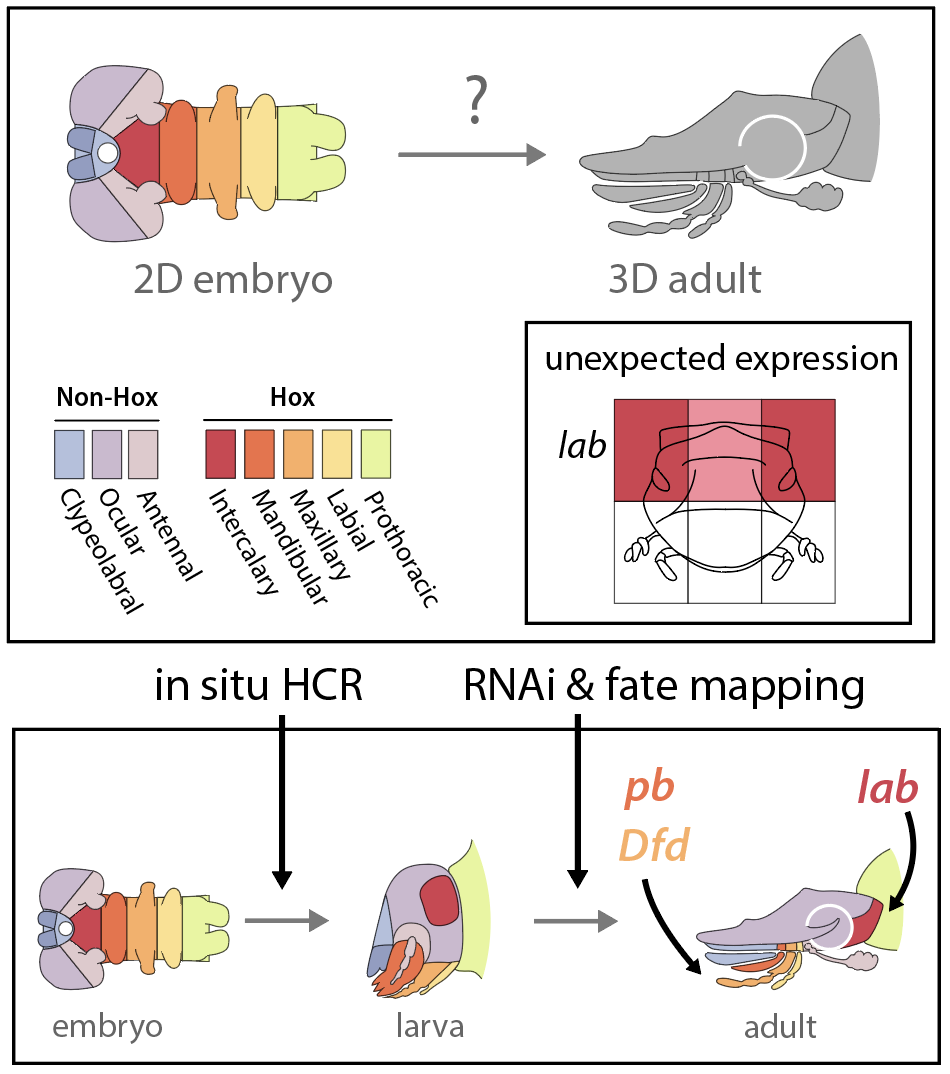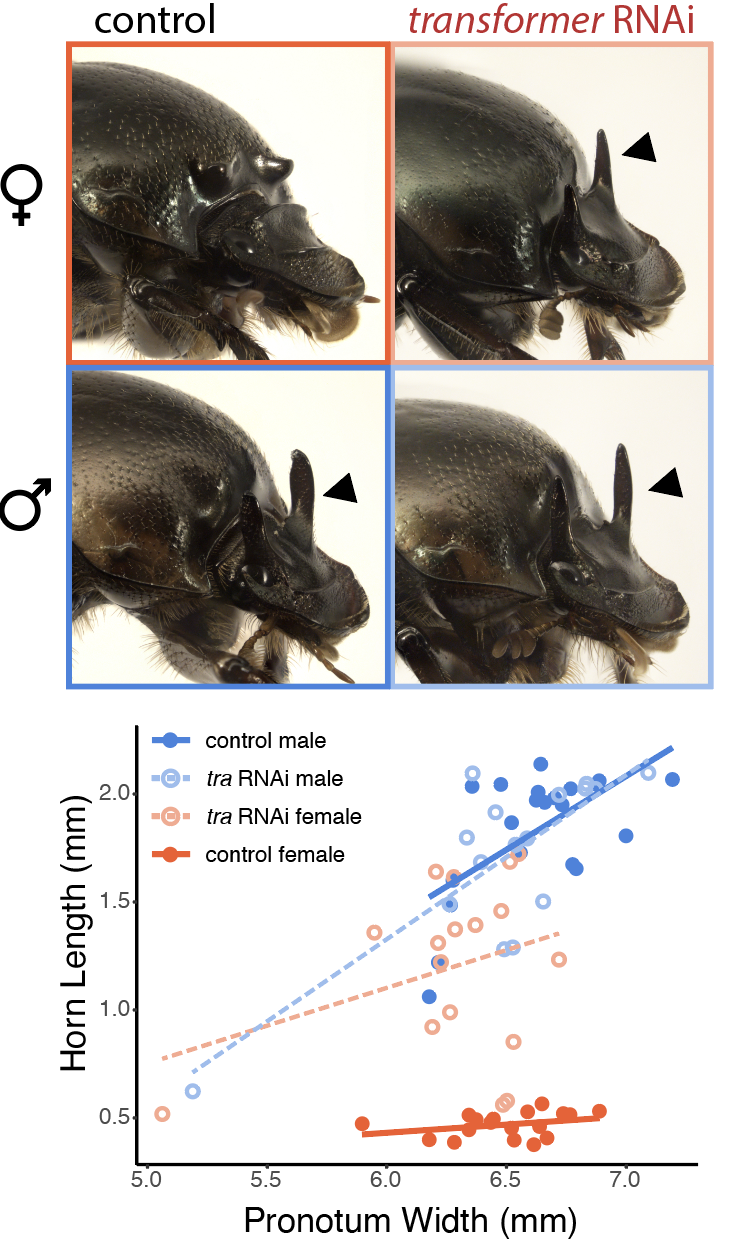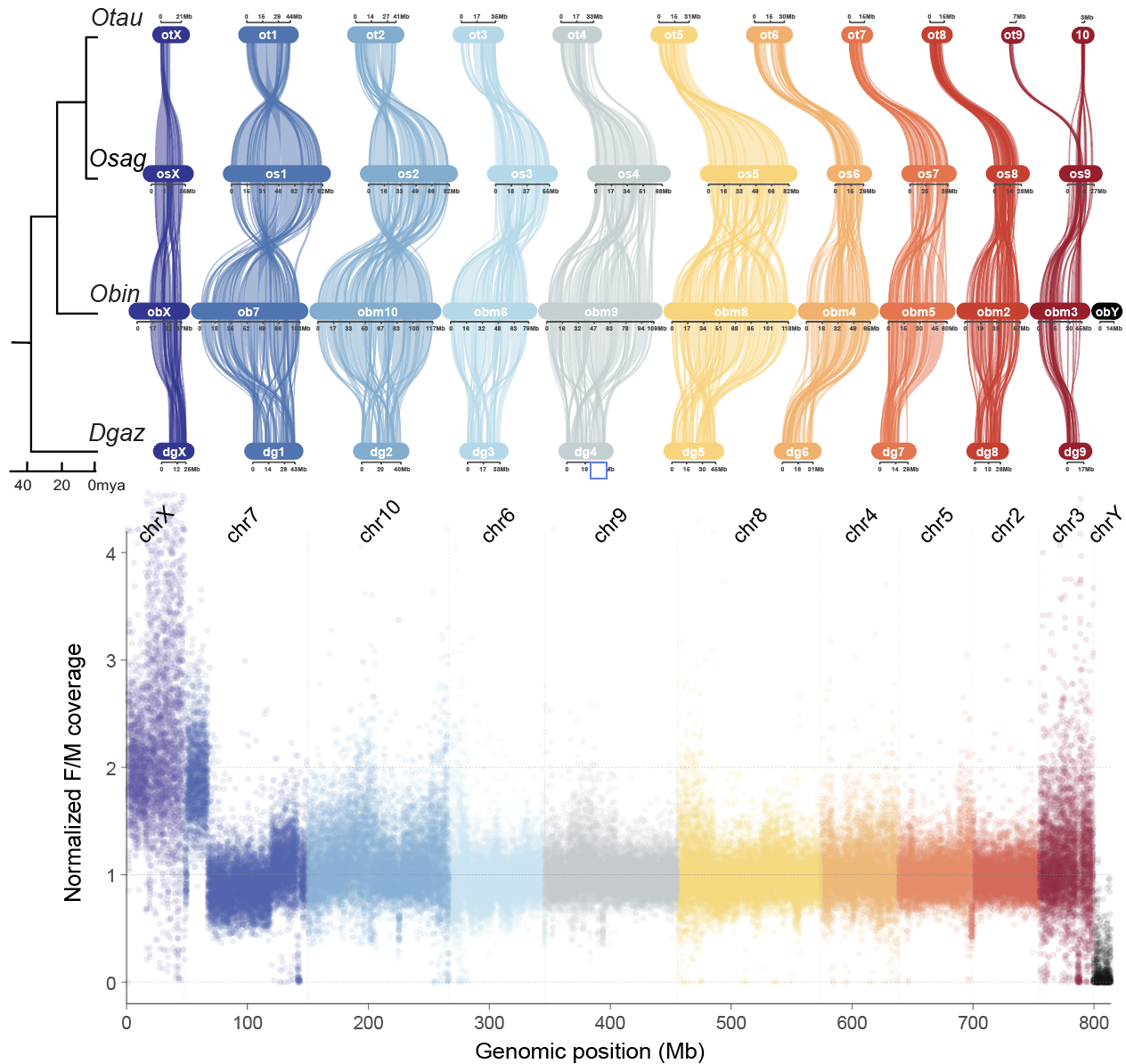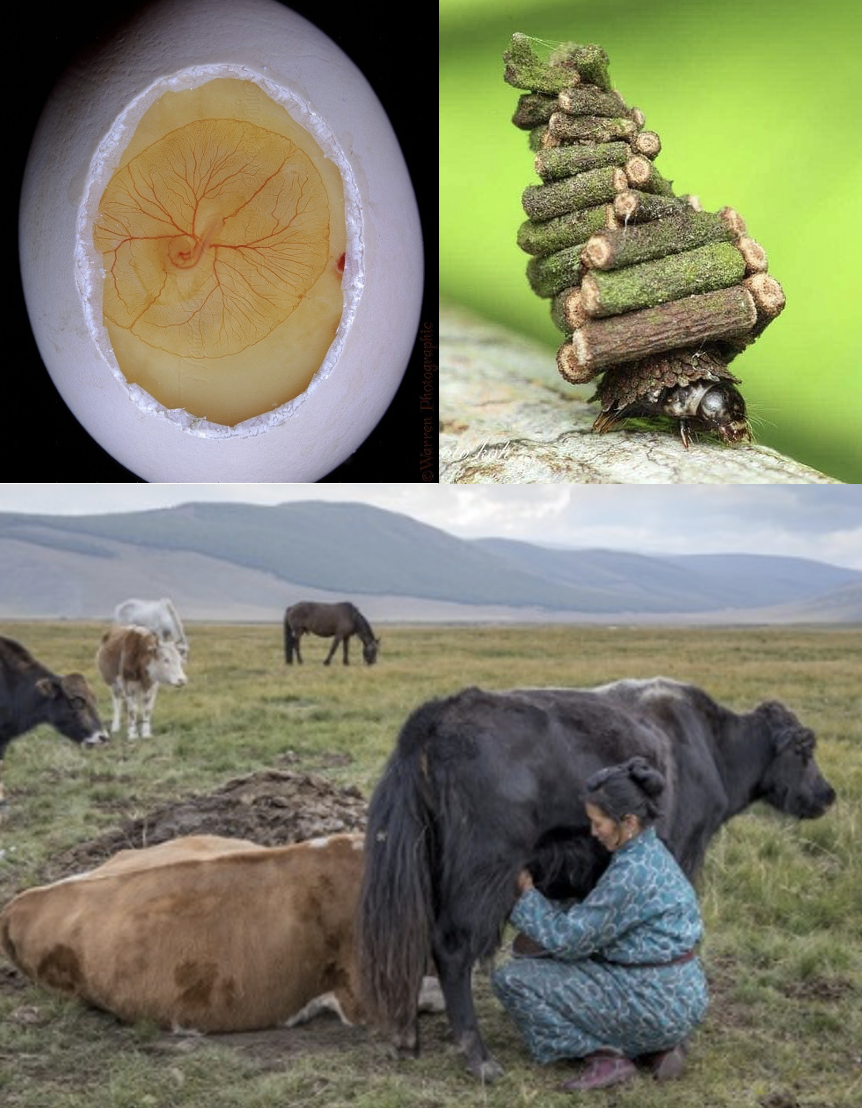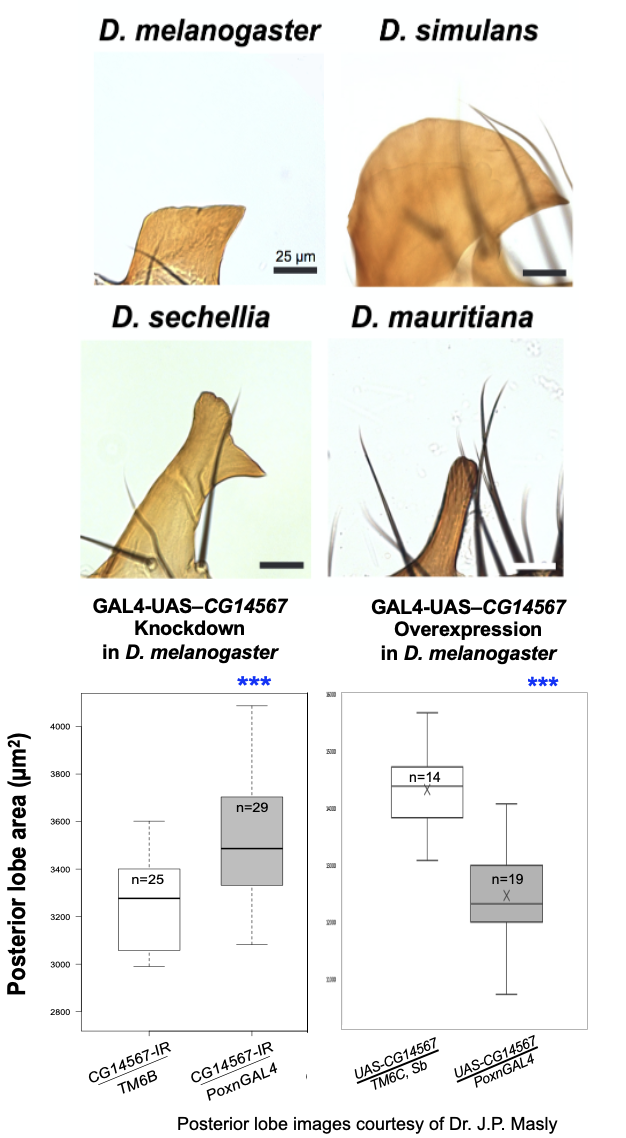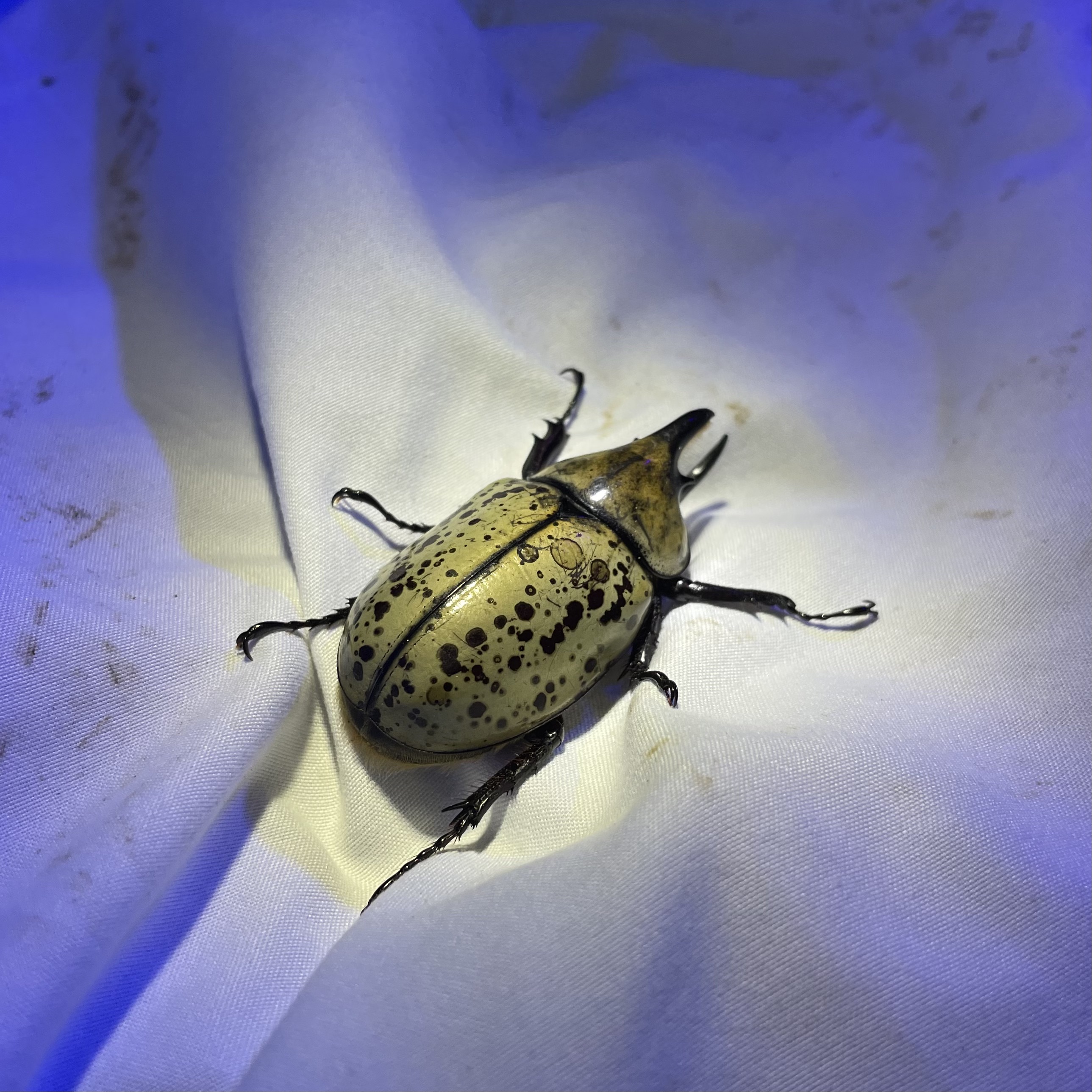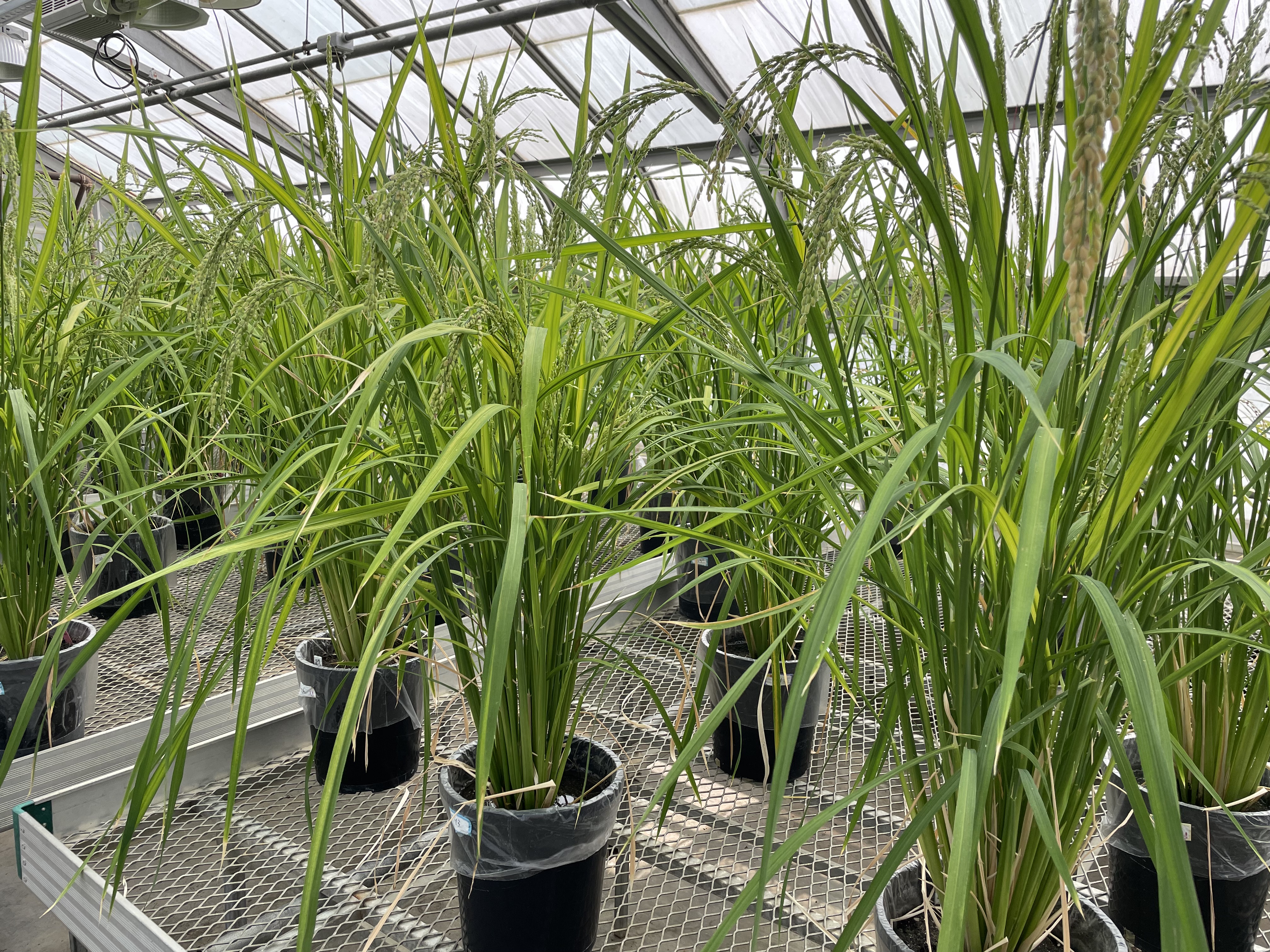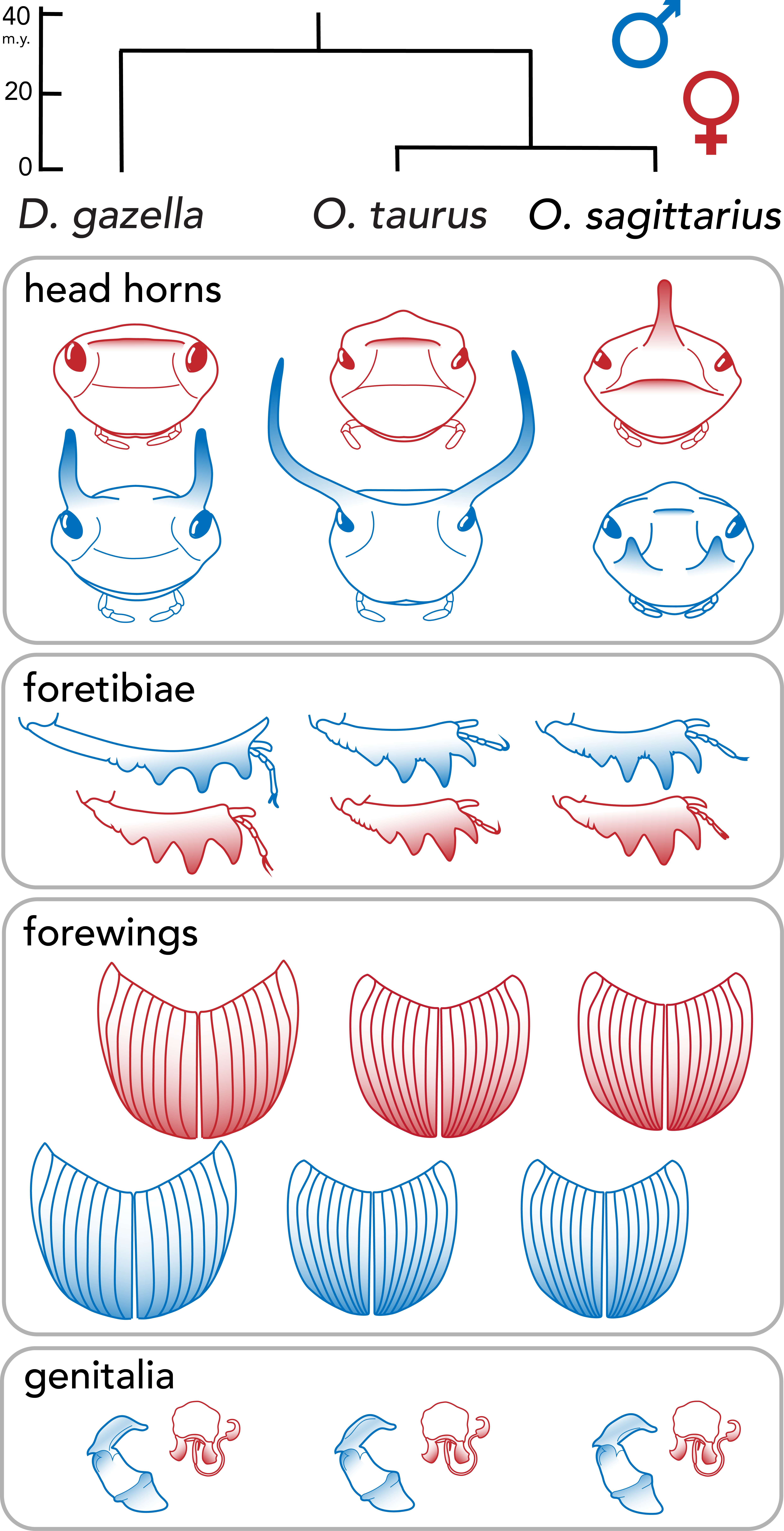
Sexual dimorphism represents one of the most significant dimensions of intraspecific variation in sexually reproducing organisms, creating much of the variation upon which evolutionary processes can act. Furthermore, organisms are mosaics of traits that vary in the degree to which they exhibit dimorphism. Therefore, sex-biased development has the potential to constrain or facilitate the diversification of novel traits and functions. While the ecological significance and fitness relevance of sex-dependent development is often well characterized, the underlying gene regulatory mechanisms are not. The striking diversity of sexually dimorphic traits in horned beetles offers the opportunity to characterize the interplay of gene regulatory mechanisms along two critical axes of diversification: the divergence of sex-biased development across different body regions, and macro-evolutionary divergence in sex-biased development across species. I am capitalizing on this diversity of traits to assess how development generates sexually dimorphic phenotypes, and how these processes are employed to adjust trait development as a function of sex, trait type, and species.

